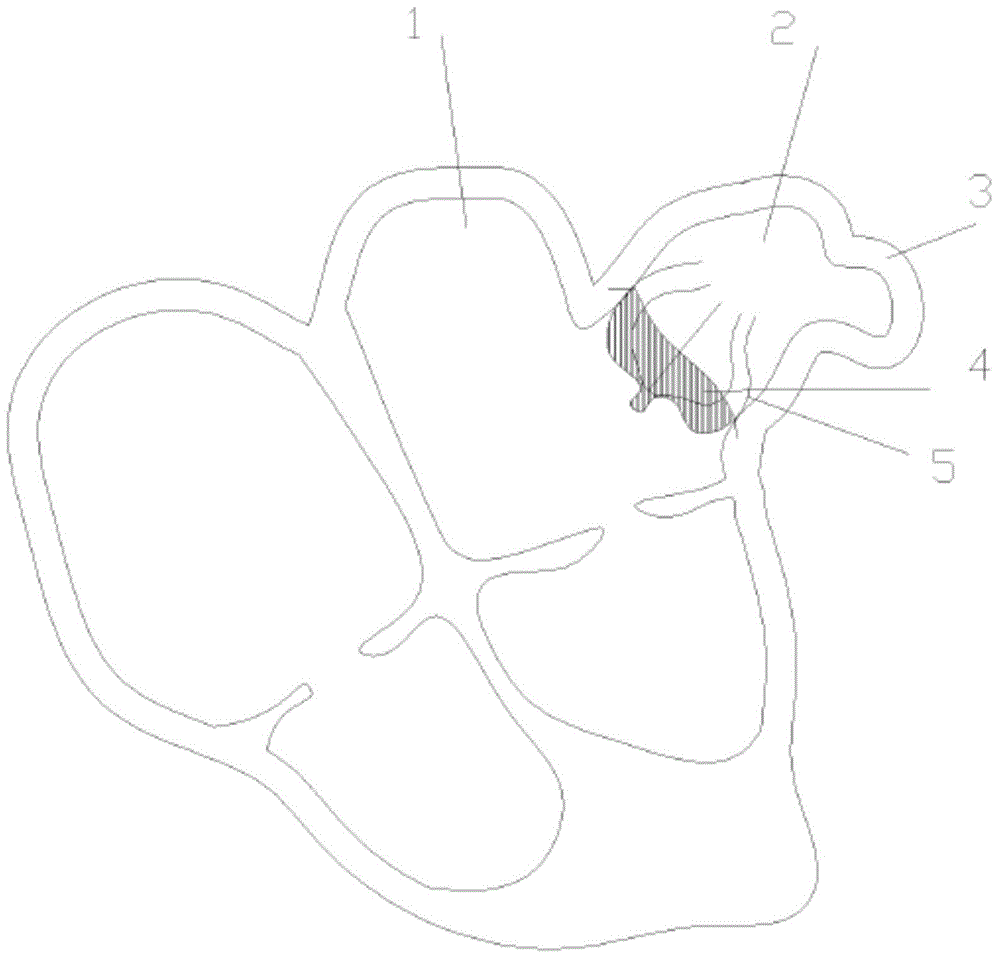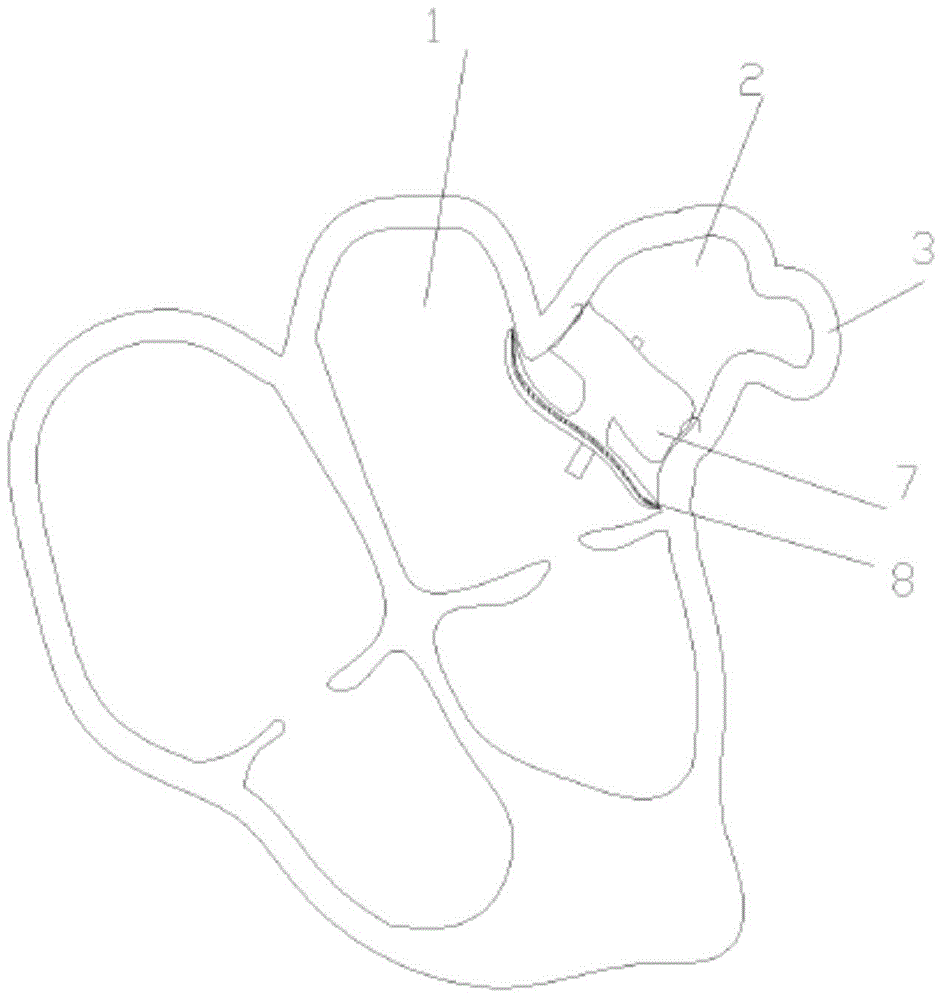Device for left auricle ligation and using method of device
A surgical device and a surgical technique, applied in the field of medical devices, can solve the problems of easy failure of knotting, easy automatic undoing, and difficult control of ligatures, so as to achieve the effect of reducing surgical risks and saving surgical time.
- Summary
- Abstract
- Description
- Claims
- Application Information
AI Technical Summary
Problems solved by technology
Method used
Image
Examples
no. 1 approach
[0095] The structure of the device for left atrial appendage occlusion surgery provided by this embodiment is as follows: Figure 6-13 and Figure 16 As shown, it includes an outer sheath tube 21 for reaching the left atrial appendage through the venous blood vessel; an inner sheath tube 22 for reaching the left atrial appendage through the venous blood vessel and positioning the guide wire 23; the front end for introducing the minimally invasive surgical instrument is J A guide wire 23 of the type; a spiral device 24 of medical stainless steel material used to hold the tip of the left atrial appendage; a knotting device and a suturing device for knotting the tip of the left atrial appendage, and the suturing device can be selected for use. A suture device for minimally invasive surgery, so not shown in the figure; a cutting device for cutting off the knot at the tip of the left atrial appendage, such as thermal shears 25; wherein, the diameter of the outer sheath tube 21 is g...
no. 2 approach
[0118] In this embodiment, a sheath tube assembly for a left atrial appendage ligation operation device is provided, such as Figure 15 As shown, it includes an inner sheath 22' and the inner sheath is embedded on the inner wall of the outer sheath. The inner wall of the inner sheath tube 22' is provided with three slideways 221' for positioning the three guide wires. The three slideways 221' are arranged in an equilateral triangle on the inner wall of the inner sheath tube 22'. The inner sheath of this structure can penetrate three guide wires at the same time, and each guide wire is loaded with different surgical instruments, and the next step can be directly performed after the previous step of the operation is completed, without having to end each step of the operation. After the guide wire is replaced, the operation time is saved and the operation risk is greatly reduced.
no. 3 approach
[0120] This embodiment provides a surgical device for left atrial appendage ligation, which includes: a sheath assembly; a guide wire with a J-shaped front end for introducing minimally invasive surgical instruments; a medical stainless steel material for holding the tip of the left atrial appendage The screw device; the suturing device for knotting the tip of the left atrial appendage; the cutting device for cutting at the knot at the tip of the left atrial appendage.
[0121] The method of use of this embodiment is:
[0122] a. Find the vein entrance;
[0123] b. Puncture through the interatrial septal approach with the outer sheath so that the front end of the outer sheath touches the inside of the tip of the left atrial appendage;
[0124] c. Under the guidance of fluoroscopy and intracardiac echocardiography, insert the three guide wires into the tip of the left atrial appendage along the inner sheath;
[0125] d. Install a screw device, a suturing device and a cutting ...
PUM
 Login to View More
Login to View More Abstract
Description
Claims
Application Information
 Login to View More
Login to View More - R&D Engineer
- R&D Manager
- IP Professional
- Industry Leading Data Capabilities
- Powerful AI technology
- Patent DNA Extraction
Browse by: Latest US Patents, China's latest patents, Technical Efficacy Thesaurus, Application Domain, Technology Topic, Popular Technical Reports.
© 2024 PatSnap. All rights reserved.Legal|Privacy policy|Modern Slavery Act Transparency Statement|Sitemap|About US| Contact US: help@patsnap.com










